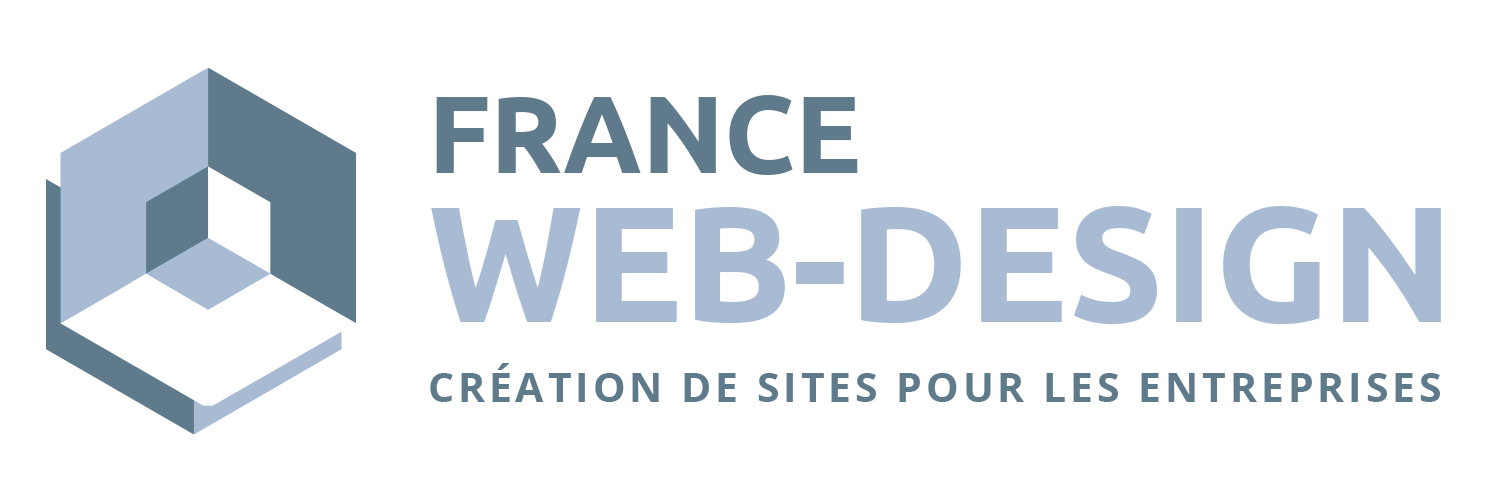Introduction
Search engine optimisation (SEO) and user experience (UX) are two essential pillars of website design. To be successful on the internet, it's not enough just to have an attractive website; it must also be optimised for search engines. This involves meticulous work upstream on the structure of the site, the choice of relevant keywords, the quality of the content and its organisation. At the same time, offering an optimal user experience is just as important. A site must be accessible, ergonomic and offer an intuitive user experience. Combining these two dimensions may seem complex, but it's what makes it possible to stand out from the crowd in the saturated world of the Web.
SEO: A Major Stake in Visibility
Search engine optimisation, better known as SEO (Search Engine Optimization), involves working on various aspects of your site to make it as compatible as possible with the algorithms of search engines, primarily Google. The aim? To position your site as high as possible in the results pages, to attract as much qualified traffic as possible. This involves a meticulous choice of keywords on which to rank, technical optimisation of the site (loading time, mobile compatibility, etc.), as well as regular production of high-quality content.
UX: The secret of a site that's easy to navigate
Alongside SEO optimisation, it's vital not to neglect the user experience (UX). A site can rank very well on Google, but if it's not pleasant to navigate, visitors won't stay. UX covers a number of areas: site ergonomics, fluidity of navigation, design, page loading time, accessibility on different media (computer, mobile, tablet), etc. It's vital to design your site from the point of view of the end user, in order to offer the best possible experience.
How to create a user-friendly and SEO-friendly website?
Combining SEO and UX may seem complex, but it's the key to creating a high-performance website. It involves putting in place an effective SEO strategy while taking account of users' needs and expectations. It's a balancing act, requiring a good knowledge of search engine optimisation techniques, as well as a precise understanding of user behaviour.
Need a website?
Ask for a free quote!
Thinking about Search Intent as the Starting Point of the User Journey
The search engine is no longer just an index of pages; it is the first link in an experience. When someone types in "how to prune an olive tree", Google tries to assess their (informative) intention and offers results that combine semantic relevance with ease of consultation. A site that simply piles up keywords may rank well in the short term, but if its content does not provide a clear and pleasant answer to the question, the bounce rate will rise. Behavioural signals (pogo-sticking, dwell time, Organic CTR) are now used as secondary indicators by the algorithms. To secure a dual UX/SEO benefit, start by mapping intentions: informational, navigational, transactional or local. Airbnb, for example, has developed its neighbourhood guides ("Things to do in Rome") not to "make content", but to reassure the user before booking. The gain in positions on queries such as "what to do in Rome" is simply a positive externality of an empathetic UX.
Organic CTR) are now used as secondary indicators by the algorithms. To secure a dual UX/SEO benefit, start by mapping intentions: informational, navigational, transactional or local. Airbnb, for example, has developed its neighbourhood guides ("Things to do in Rome") not to "make content", but to reassure the user before booking. The gain in positions on queries such as "what to do in Rome" is simply a positive externality of an empathetic UX.
Structuring the Tree Structure for Robots and Humans
A site plan designed solely for the crawl often looks like a rigid organisation chart; conversely, an emotional 100 % path can lead Googlebot astray. Synergy lies in logic topic cluster This is the strategy adopted by HubSpot for the search query "email marketing ...": an anchor page summarises a subject, satellite content explores each sub-topic in greater depth and contextual internal linking ties it all together. This is the strategy adopted by HubSpot for the query "email marketing". UX: users navigate in depth according to their needs. SEO: semantic consistency strengthens the relevance of each page. To validate the structure, map clicks using a tool such as Hotjar and overlay them on the crawl logs diagram; any discrepancy indicates a frictional node that is detrimental to both comfort and SEO.
Contextual navigation and breadcrumb trail
The breadcrumb trail is more than just a visual reassurance; when it is marked out with structured data <script type="application/ld+json">It also feeds the Knowledge Graph. Decathlon uses it for its product sub-categories ("Clothing > Women's > Trail"): the mesh directs visitors to sister categories and provides Google with an explicit crawl path to deeper pages, which are often the ones that convert the most.
Loading speed: the common foundation of UX and SEO

Since the "Speed" update (2018) and, more recently, the integration of Core Web Vitals, Google has made speed an official ranking factor. But on the UX side, the frustration starts as soon as 2.5 s of Largest Contentful Paint. Amazon measured that a latency of 100 ms cost them 1 % in turnover. To implement a performance budgetlist all the assets (CSS, JS, fonts, images) and assign them a maximum weight. On the newspaper site The GuardianEach component has to justify its size to the design team. Result: a First Input Delay median of less than 50 ms on mobile, without sacrificing editorial richness.
Practical techniques
- Prioritise loading of the visual hero via the loading="eager" and relegate the carousels below the waterline by loading="lazy".
- Cutting a monolithic JavaScript file into modules: IKEA reduced the size of its React bundle from 800 kb to 250 kb using the splitting code.
- Implement HTTP/2 Push or, more simply, a preload on critical resources.
Mobile-First and Accessibility: Two sides of the same coin
With mobile-first indexing, Google evaluates a site primarily via its smartphone version. Ignoring responsive design means depriving the majority of visitors of comfort. But there's a fine line between adaptive and accessible: a 24 px high button is tap-friendly for one finger, but often fails the test contrast ratio for a colour-blind person. Accessibility (WCAG 2.1) has an indirect impact on your SEO: descriptive alternative text on an image means rich content for search engines. GOV.UK found that adding simple alternative descriptions to its graphics boosted 25 % of its pages into the top 3 on Google Images, while serving its visually impaired constituents.
UX copywriting: From micro-content to deep semantics
Microtext - button labels, error messages, section titles - influences understanding and therefore retention. Dropbox replaced "Sign up" with "Create an account": +3.5 % registrations but also +12 % clicks on the organic result, because the Title and the micro-content are aligned. To insert your key expressions naturally, adopt the content design 1) identify the user task, 2) find the language they use, 3) test clarity. Corpora from tools such as AnswerThePublic reveal the expected lexical field. Inject it into H2s, bulleted lists, illustration captions - where the eye naturally scans. This reduces the internal search rate (a symptom of poor UX) and increases semantic density (positive for SEO).
Core Web Vitals: Continuous Measurement, Sprint Action
The LCP, FID and CLS metrics have been an official signal since 2021. But Searchmetrics' studies show that isolated technical improvement produces a temporary gain if it is not embedded in a continuous improvement cycle. Adopt the method UX/SEO Kanban Each backlog card is labelled "UX impact", "SEO impact" or "double impact". The redesign of the Web fonts (switch to a local font variable) reduced the LCP by 400 ms at Backlinko, but also increased legibility (net promoter score +8). Monitoring is available via Real User Monitoring (RUM): rather than relying on lab tests, observe performance on real devices. This will reveal regional disparities: for example, a poorly configured CDN will penalise mobile reading in French-speaking Africa, which is a fast-growing segment.
Persuasive Design and Behavioural Signals
Google denies measuring "bounce rate" as a factor, but it does confirm that it uses user satisfaction signals. If your page promises "loan simulator", users expect to see an interactive tool immediately. Banque BNP Paribas has understood this: a simulator accessible from the waterline caused the return to the SERP to drop by 18 %. In SEO, this prolonged engagement sends a message: the result satisfies the intention. To sustain persuasion, apply the Fogg theory (Motivation + Ability + Trigger): a call-to-action button must coincide with the moment when the value is understood. UX writing ("Simulate my rate" rather than "Submit") makes the mental effort low, which translates into a longer session, and therefore a better user experience. dwell time.
Structured Data: Rich Snippets for the Experience
Rich snippets (FAQ, HowTo, Ratings) enrich the SERP and increase CTR. But, curiously, they also improve the post-click experience: users arrive on a page that visually confirms what they saw in the snippet. Leroy Merlin uses tags to structure its DIY guides FAQPage. For the query "lay wall tiles", the extract already shows three steps; once on the page, the deep anchor (#etape3) automatically scrolls to the appropriate section. Result: -30 % of time to reach the information you're looking for and +14 % of videos viewed, boosting internal mesh and crawl depth.
Less well-known but valuable schemes
- Speakable for voice assistants, useful if your audience is listening to recipes in the kitchen.
- ProductGroup Amazon has adopted it to attach colour/size variations to a main listing and consolidate its authority.
- Organization > Logo Favicon: speeds up the display of the favicon in the mobile SERP, boosting brand recognition and influencing organic clicks.
Visual Content: Weight, Relevance and Accessibility
Images and videos improve understanding (UX) and attract traffic via Google Images and Discover (SEO). Yet, poorly optimised, they sabotage loading time. The BBC has migrated all its thumbnails to WebP, with an average gain of : -25 % in weight with no visual loss. For SEO, fill in the alt For UX, apply the 1-1-1 rule: 1 idea per visual, 1 caption that leads to action, 1 logical position in the page layout. On YouTube, the Moz thumbnail entitled "SEO Split-Testing" includes a number ("+37 % ): as well as the CTR benefit, this plants an anchor for memorisation, stimulating direct feedback, a vector for traffic. brand reliable.
User Testing, A/B Testing and Impact on Search Engine Optimisation
The myth is that A/B testing creates duplicate content. Google simply advises against cloaking: use rel="canonical" on variant B or serve it via JavaScript to avoid indexing the test URLs. Booking.com, a master of its trade, is launching 1,000 simultaneous experiments; the primary metric remains conversion, but each test includes a monitor of organic positions on a panel of key queries. The SEO team is given a red button if a variation causes traffic to fall by more than 5 %. Example: a sticky "Only 2 rooms left! reassurance banner increased bookings but hindered FID; decision: display it in pure CSS rather than blocking JS, reconciling UX, conversion and SEO.
Monitoring Technical Integrity: Logs, Simultaneous Crawl and UX Audit
Technical SEO (sitemaps, canonical, hreflang) and UX should not live in two silos. On the Zalando e-commerce site, each UX improvement sprint automatically triggers a ScreamingFrog crawl to compare the technical footprint; any unexpected variation (duplicate title, 4xx) blocks the production launch. Add a manual review: a designer, for example, prevents a styled :focus state from being removed for aesthetic reasons, which would degrade keyboard accessibility and potentially your Lighthouse scores.
Local SEO and Micro-experience
For a physical business, the Google Business Profile (GBP) is sometimes the first and last point of contact. An updated photo of the shop front, a geolocated PDF menu, a weekly post - these are all micro-experiences. A Parisian café, "Le Peloton", saw its route requests increase by 65 % after adding 360° images, which at the same time improved its local ranking; Google measures engagement on the listing as a sign of relevance. On your site, include this information (timetables, FAQs, customer reviews) in the tags LocalBusiness the UX is better (no dissonance between the form and the site) and SEO is strengthened by NAP consistency.
Security by Design: HTTPS, RGPD and User Confidence
Since 2014, HTTPS has been a ranking signal. But data protection is a pillar of the experience. When a payment form displays a green padlock, the abandonment rate drops by 17 % (Baymard Institute study). In 2022, the Fnac site moved its cookies banner to the bottom of the screen, reducing visual intrusion; the "Accept" click rate remained stable, while Core Web Vitals improved (CLS -0.05). RGPD compliance relates to reputation: Wikipedia reports fewer than 0.2 % "unsafe site" complaints via Google Safe Browsing, a trust factor which, although not public, influences visibility.
Headless Architecture: Separation of Content and Presentation for Performance
The headless CMS (Strapi, Contentful) enables the same content to be served to a React site, an iOS app and a voice assistant. In terms of UX, omnichannel consistency becomes a reality; in terms of SEO, the static interface generated (Next.js, Nuxt) speeds up server rendering. The magazine Smashing has migrated to Next.js: pages are pre-rendered (static generation) and then hydrated, offering an LCP of 1.2 s. The recovery of visibility on long-tail queries (CSS container queries, etc.) is also due to the possibility of adding content on the fly without front-end redesign.
Conclusion: Towards a Virtuous UX x SEO Cycle
SEO and user experience are no longer two competing disciplines; they feed off each other. Intention-focused content, technical performance, editorial clarity, ethical persuasion and continuous measurement create an ecosystem where every improvement benefits both the visitor and the rankings. Adopt a hybrid method (data, design, semantics) and you'll build a website that's not only visible, but also sustainable, memorable and profitable.









